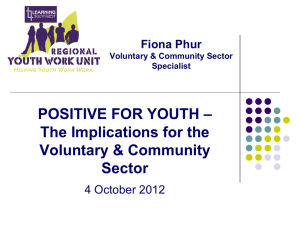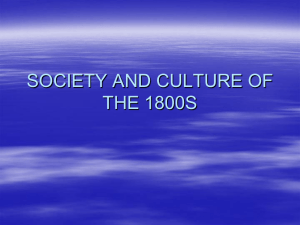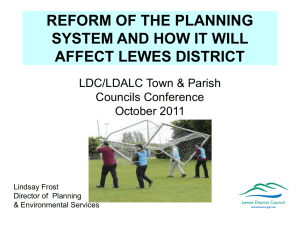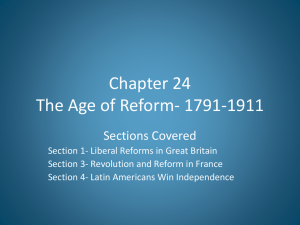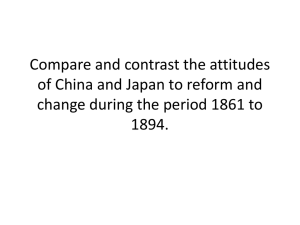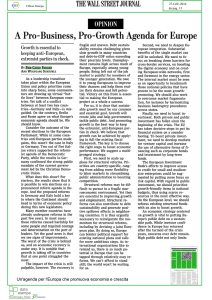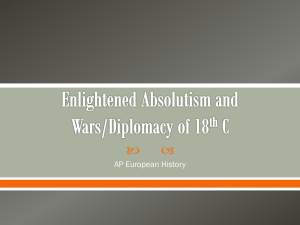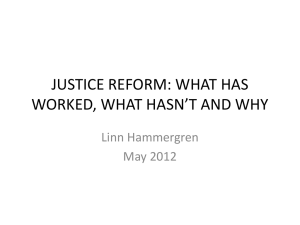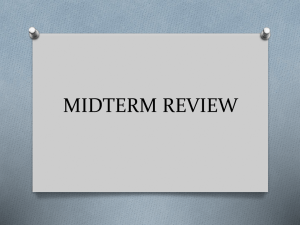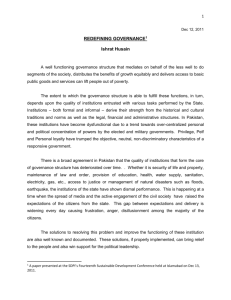SOS-talk-7.29.11
advertisement
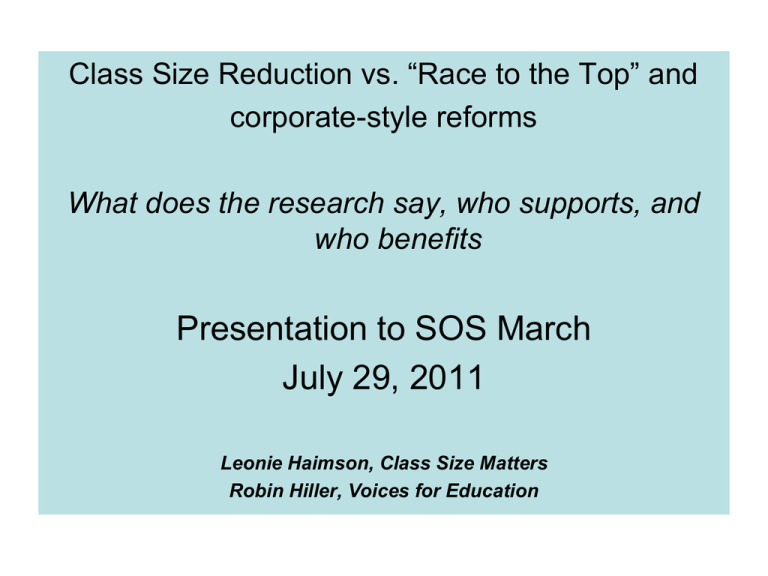
Class Size Reduction vs. “Race to the Top” and corporate-style reforms What does the research say, who supports, and who benefits Presentation to SOS March July 29, 2011 Leonie Haimson, Class Size Matters Robin Hiller, Voices for Education Rigorous research base for Class Size Reduction • Randomized experiments – the gold standard of research-- shows smaller classes in the lower grades lead to significant gains in achievement, higher graduation rates, more student engagement and lower disciplinary rates. • Reducing class size is one of four K-12 reforms backed by “rigorous evidence,” acc. to Institute of Education Sciences, research arm of US Dept. of Education.* • There are also scores of non-experimental studies showing smaller classes in middle and upper grades are correlated with better student outcomes. * Other three K-12 evidence-based reforms, acc. to IES, are one-on-one tutoring by qualified tutors for at-risk readers in grades 1-3, Life-Skills training for junior high students, and instruction for early readers in phonemic awareness and phonics. Research does not support Race to the Top (RTTT) and corporate-style reforms • What are their key elements? • Increased competition and privatization through charter school expansion and online learning. • Use of high-stakes accountability systems, esp. standardized exams to judge teachers and schools. Yet there is no research base or evidence for any of these reforms. What evidence is shown about corporate-style ed reforms? • Nat. Acad. of Sciences has issued two reports vs. RTTT and high stakes accountability, saying no evidence that high stakes testing or teacher evaluations linked to test scores will improve schools and may have damaging effects. • Most authoritative analysis of charter schools (CREDO) shows that after controlling for student background, only 17% of charters did better than similar public schools, 37% did worse, and in 46% of cases, there was no statistical difference. What about online learning? • Largest study of virtual education done for US Department of Education concluded that there is a “lack of scientific evidence of the effectiveness” of online classes” in grades K-12. • Only 30% of online schools met Adequate Yearly Progress (AYP) as compared to 54.9% of regular "bricks and mortar” schools. • The Pentagon currently refuses to accept graduates from online high schools into the military, since the academic standards are so low. Experience of other countries • Finland, which has made greatest gains on international comparisons like the PISA, turned around school system in 1970’s when reduced class size. • Finland has no high-stakes standardized testing until end of HS (for college entrance reasons). • Only uses standardized exams on small samples of students for diagnostic purposes. Support by stakeholder groups • Class size reduction has strongest support of any education reform in polls of stakeholder groups, incl. parents and teachers. • Teachers say (at over 90%) that it is the best way to improve their effectiveness, over more training, increasing salaries, merit pay or any other strategy . Vs. supporters of RTTT and other corporate-style reforms • Corporate reforms like increased class sizes, school closings, high-stakes testing and teacher merit pay tied to test scores are being aggressively promoted by “Billionaire Boys Club” and hedge fund operators. • According to PDK/Gallup poll, these policies have very little public support. Positive vs. negative effects on teaching force • Smaller classes tend to decrease teacher attrition rates, esp. in high needs areas, over time leading to a more experienced, effective teaching force. • Teacher evaluations or merit pay tied to unreliable test scores causes good teachers to become demoralized and/or lose their jobs. Effects on learning • Smaller classes allow reflection, feedback from teachers and peers, spark inventiveness and deeper learning through questioning, discussion and debate. • High stakes testing leads to rote learning, cheating and/or excessive test prep, narrowing of curriculum, causing students to lose interest and undermining creative thinking and inventive thought. • Since 1990, for first time, research shows American creativity is declining, most seriously among children in K-6th grades. Who do these reforms benefit or hurt the most? • Students who receive greatest benefits from smaller classes are those who need them the most: low-income and/or minority students. This is why it is one of few reforms proven to significantly narrow the achievement gap. • Competition, privatization and high stakes testing hurts high need students as charter schools tend to exclude or push out struggling students. • Online learning can widen achievement gap as students who are focused and self-motivated and have access to computers at home are more likely to succeed. • High stakes testing labels schools and teachers as failing where there is highest concentration of need, unfairly causing these schools to be closed or their teachers to be fired, leading to more disruption and dropout rates to soar.


